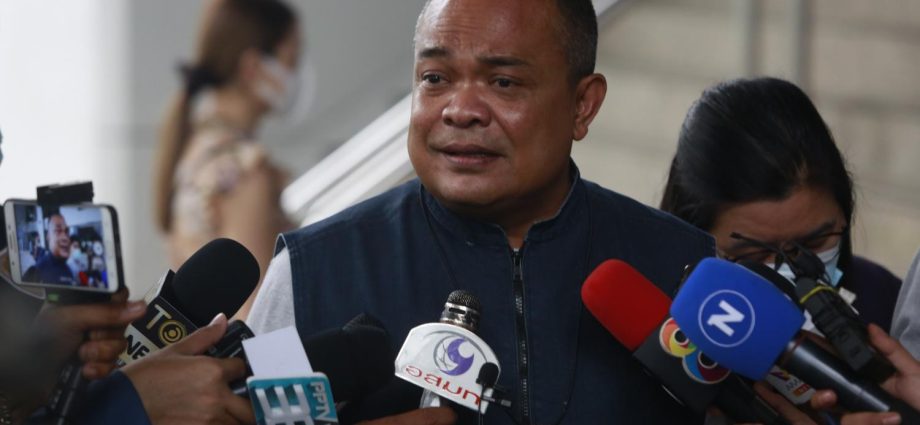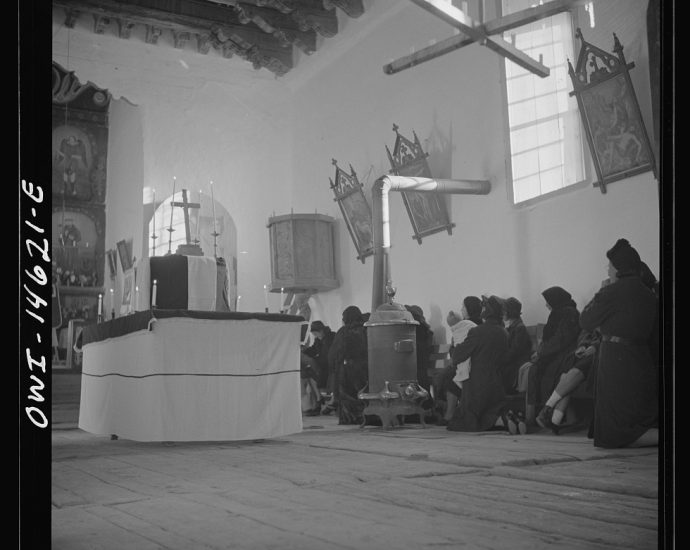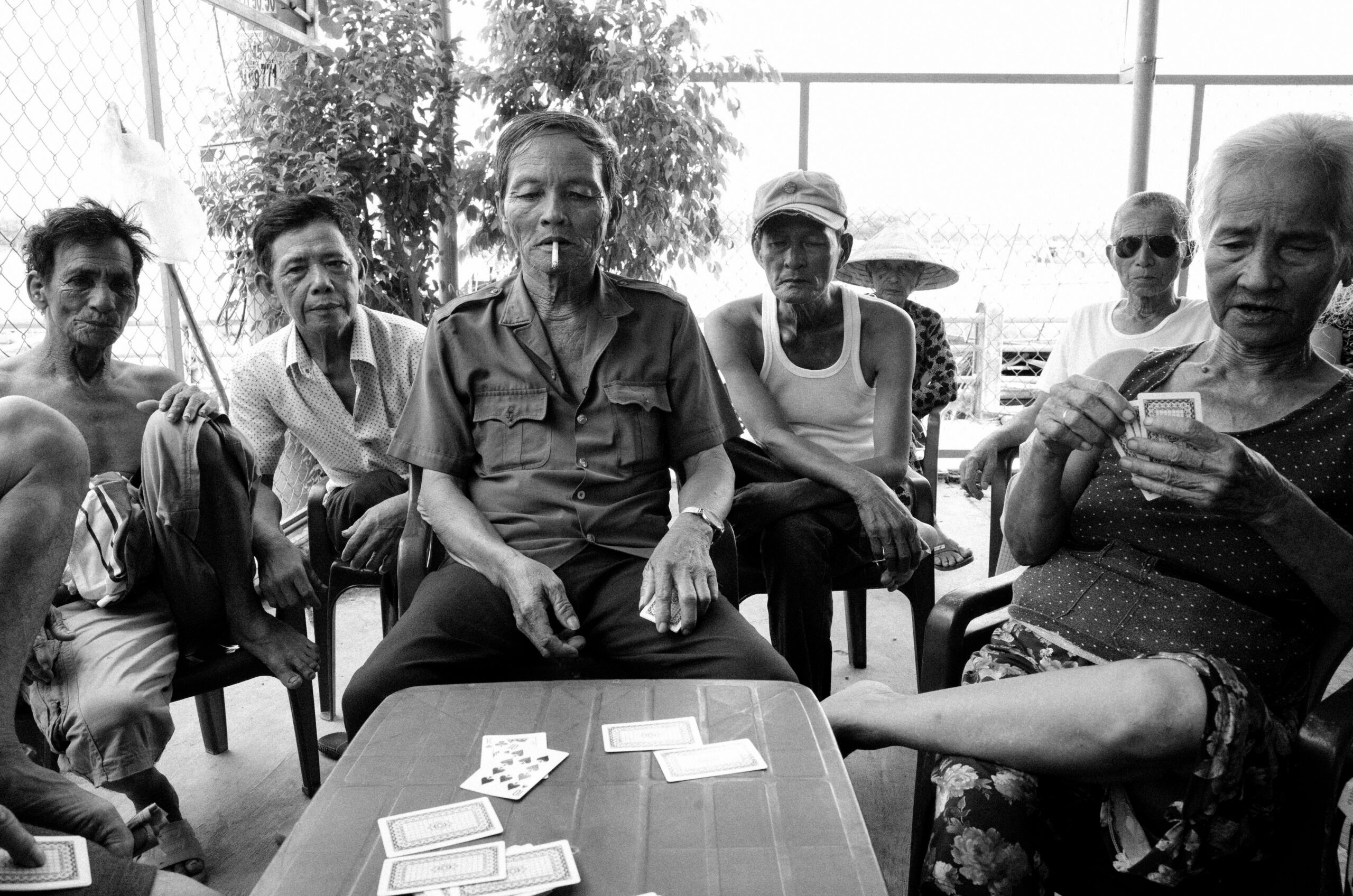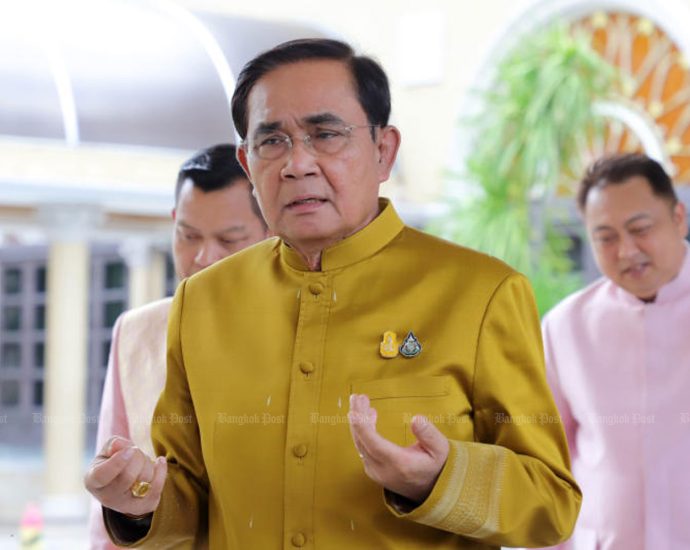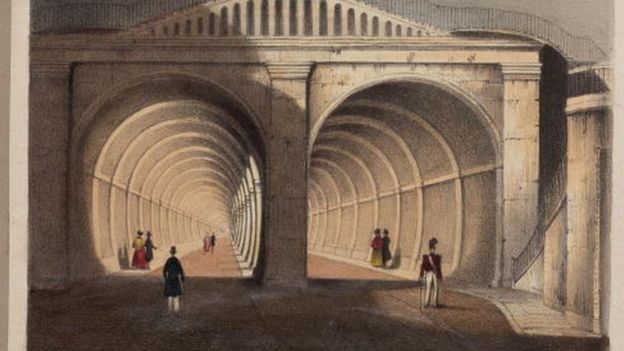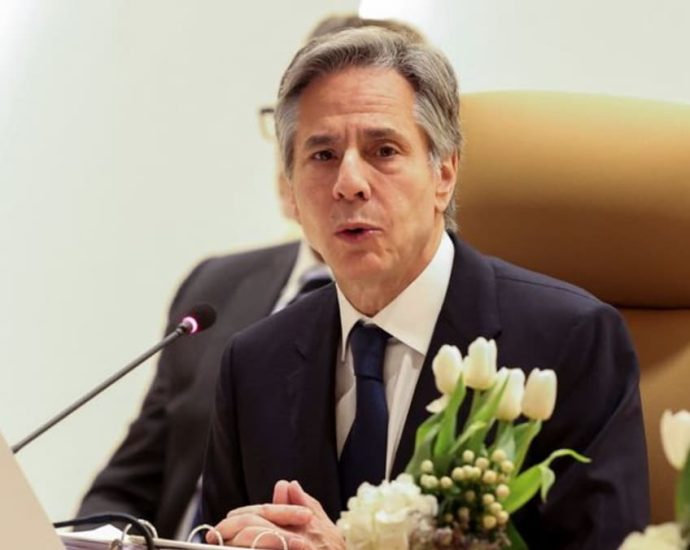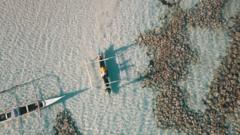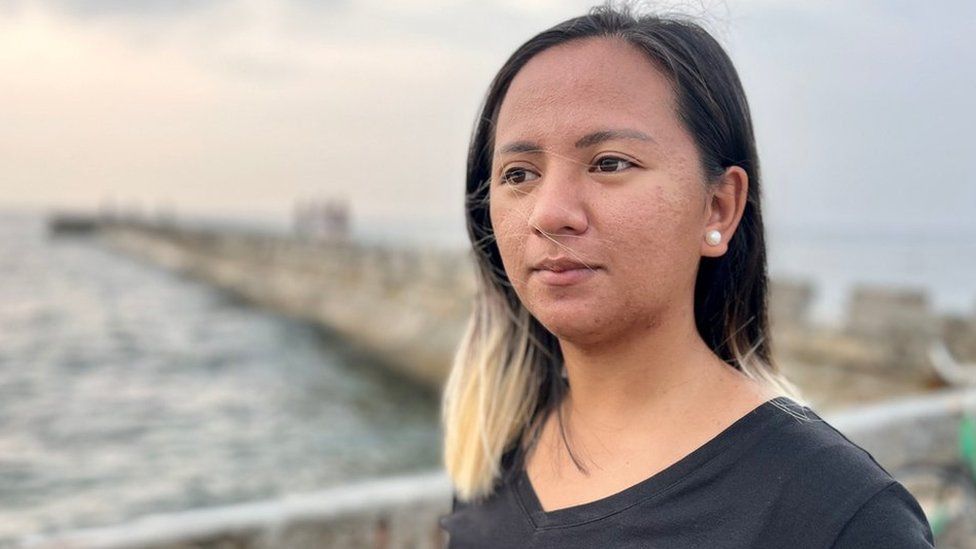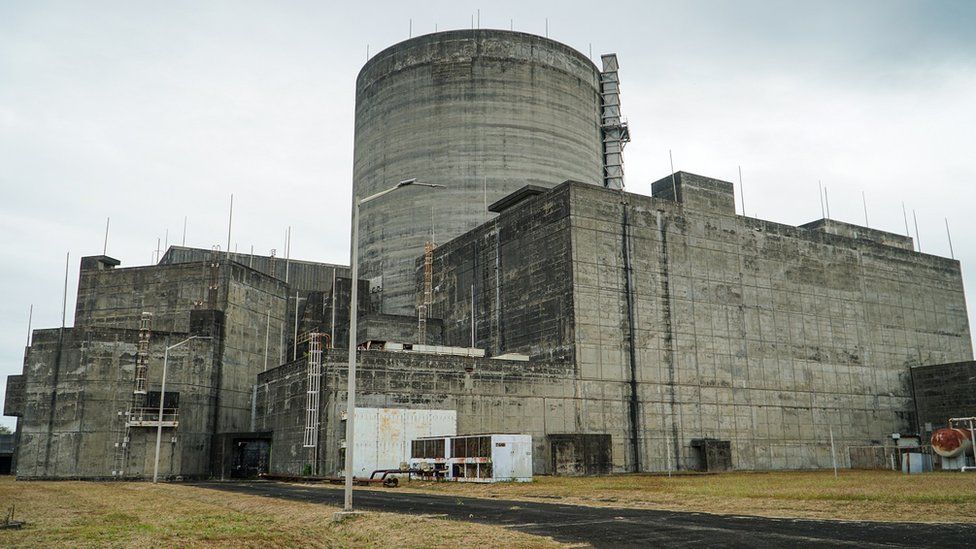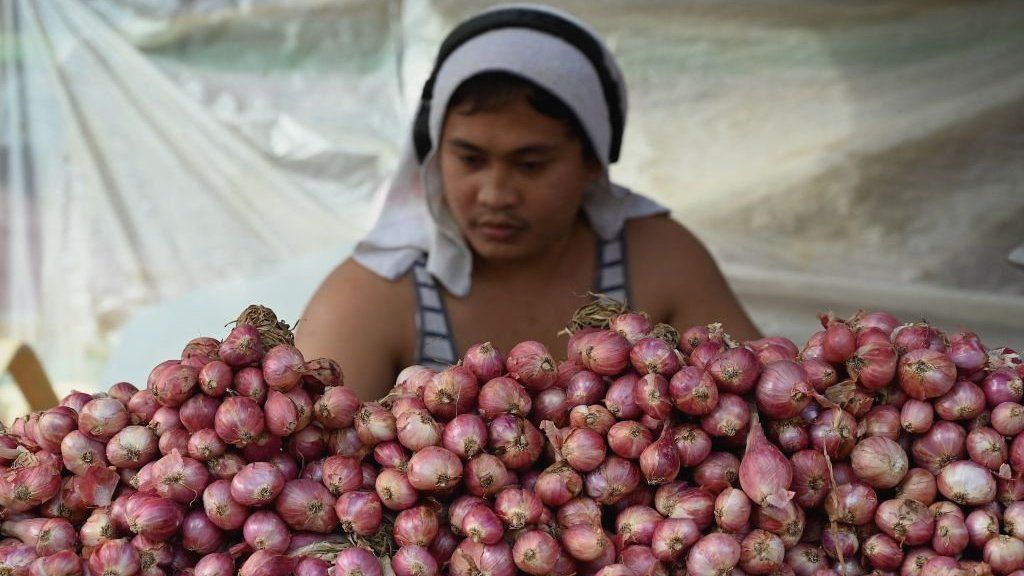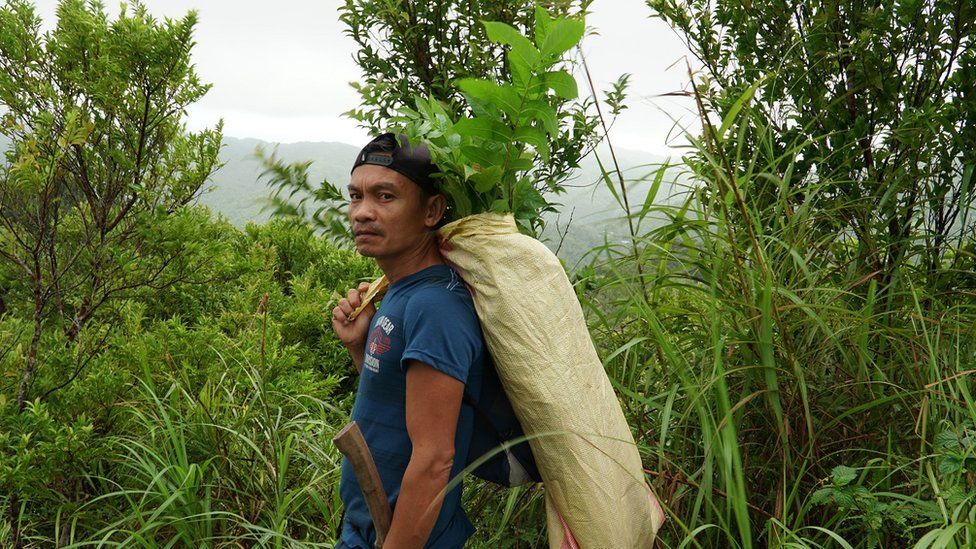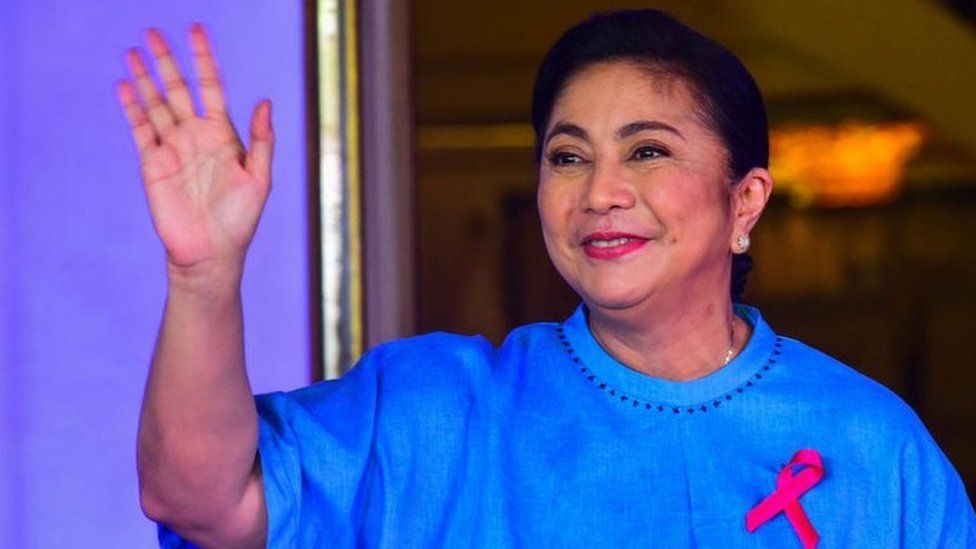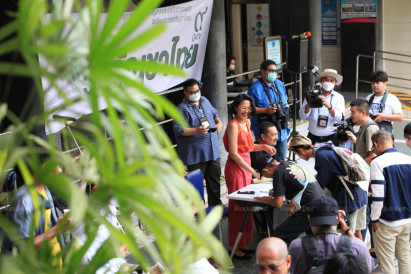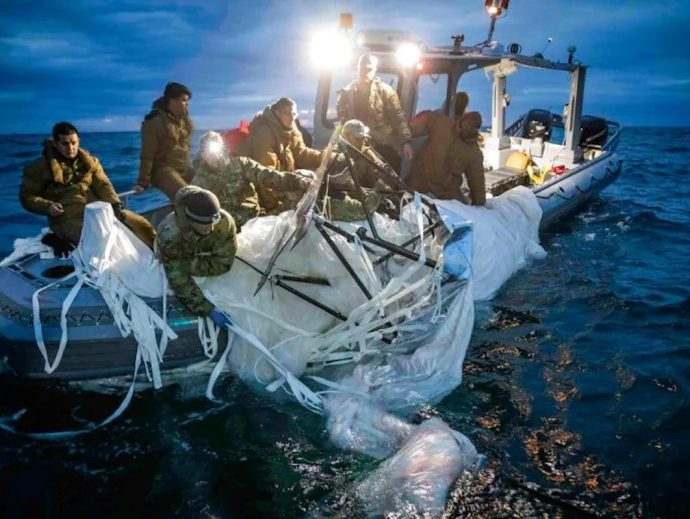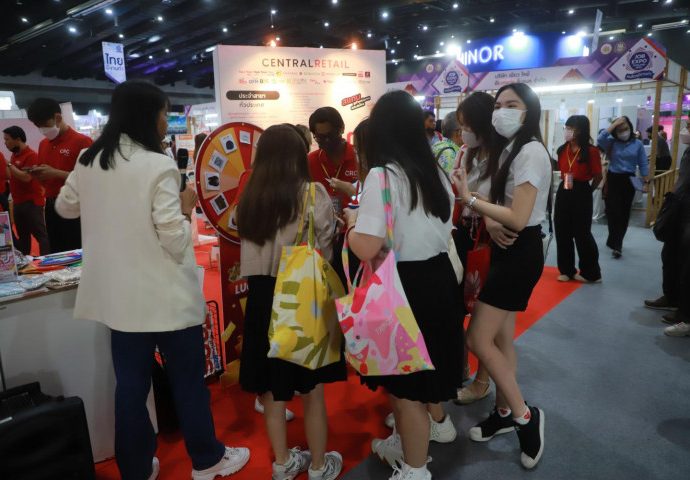On solid foundations or shaky ground?

On solid foundations?
The Move Foward Party (MFP)-led alliance is conjuring up the impression that it has already assumed control of the country’s administration, according to a political source.
The surreality being created, which critics decried as counting chickens before they hatch, has given supporters a sense that a new dawn awaits the country.
Expectations surrounding the eight-party line-up were deliberately heightened to such an extent that people are being made to feel that if the parties cannot form a new government for any reason, huge and possibly unrestrained disappointment could descend into chaos on the streets, the source said.
Such a scenario could be exploited to pressure individuals or agencies, viewed by some supporters as being hostile to the MFP-led bloc, into curtailing their tough comments or impending actions.
Cases in point have to do with the Election Commission (EC) and the Senate, which hold the fate of the bloc in their hands.
The EC has yet to endorse the election of the 500 winners in both the constituency and party-list systems in the May 14 polls.
The poll regulator has made it known that it is looking into complaints filed against 20 MPs-elect who might be handed either a red or orange card. A red card means disqualification for a severe election law violation, whereas an orange card will see their election suspended for a lesser offence.
In the event of a red card, a by-election is called, with the disqualified MP-elect barred from running again. An orange card prompts a re-poll where the suspended MP-elect can enter the race.
The source said that if half, or 10, of the 20 cases saw the disqualification or suspension of MFP people and Pheu Thai, the second-biggest party, dodged a red or orange card, it would have a profound impact on the political landscape.
It could only mean the MFP, the biggest party so far, would be equal with Pheu Thai, with 141 seats each. It was reported that some MPs-elect from a big party, understood to be the MFP, failed to vote in previous local elections. As voting in elections is a duty, failure to do so incurs penalties, including their ineligibility to contest a general election.
In a tie with the MFP, Pheu Thai would be equally able to lead the formation of a new government and look for suitors, which might include parties from the current coalition, such as the Bhumjaithai Party, the Chartthaipattana Party and even the “uncle parties” namely the Palang Pracharath Party (PPRP) and the United Thai Nation (UTN) Party.
Pheu Thai is likely to be at ease doing business with Bhumjaithai and Chartthaipattana, parties they worked with in previous coalition governments.
The major stumbling block preventing the PPRP and UTN from being part of a Pheu Thai-led administration is Pheu Thai’s vow never to work with the two parties while they are under the control of the two former coup-architect “uncles”, a reference to Prime Minister Prayut Chan-o-cha, chief adviser of the UTN, and Deputy Prime Minister Prawit Wongsuwon, who leads the PPRP.
However, some observers think Pheu Thai’s stand may not be as irreversible as many believe. If the “uncles” were to step down from their posts in their respective parties, a hook-up with the Pheu Thai Party might be less awkward.
The source said that despite the MFP-led bloc’s best efforts to present a facade of “normalcy” in forming a new government, its path to Government House will be anything but smooth and leader Pita Limjaroenrat’s aspiration to become prime minister looks far from being fulfilled. The EC’s forthcoming endorsement of MPs-elect, expected soon, is the least of its worries.
The next significant hurdle is whether the MFP or Pheu Thai is willing to step aside and let the other get the coveted House Speaker post. Such a move would be an enormous concession on either party’s part since they both have refused to yield.
Also, Mr Pita will have his work cut out defending himself before the EC and possibly the Constitutional Court against the iTV share ownership allegation. The law forbids a public office holder from possessing shares in media firms on the premise that they might exert control of the media outlet for political gain while in office.
Mr Pita acquired 42,000 shares in iTV, although questions were put forth as to whether it was still functioning as a media company. However, he is believed to have now transferred his shares to someone else in his family.
Some legal experts agreed that off-loading the shares now is not enough to save Mr Pita as the legal violation was a fait accompli.
His share ownership reportedly predates his signing, as MFP leader, of MFP candidate applications to stand in the May 14 election.
If he loses the share ownership battle and is removed as MFP leader, anything he has signed as leader, including the party candidate applications, could be declared null and void, and the respective MFP MPs-elect could be red-carded as a result.
The alliance ‘is doomed’
Winning 151 seats in the general election has put the Move Forward Party (MFP) in pole position to form a coalition and its leader Pita Limjaroenrat the front-runner to become the country’s next prime minister.

Jatuporn: Thinks Pita’s legal fate is sealed
But the controversy surrounding Mr Pita’s ownership of 42,000 shares in iTV, an independent broadcaster founded in the 1990s, has thrown a spanner into the works, threatening his chances of setting up the next government and leading the country.
The shareholding issue was brought to the attention of the Election Commission (EC) by political activist Ruangkrai Leekitwattana, a former Palang Pracharath Party (PPRP) list-MP candidate, who asked the poll agency to investigate the shares on May 10, a few days before the polls.
The constitution prohibits an election candidate from holding shares in a media firm, and if found guilty, Mr Pita, who contested the polls under the party-list system, will be disqualified.
In his defence, Mr Pita argues that he held the shares in his capacity as the manager of his late father’s estate, and, more importantly, iTV is not actively engaged in media operations anymore.
It stopped broadcasting in 2007, and its licence was taken over by Thai PBS. The company was delisted from the Stock Exchange of Thailand in 2014. Its business registration remains active because it is embroiled in a dispute with the government over unpaid concession fees.
While insisting he did not break any laws, Mr Pita announced that the transfer of shares to other heirs early this week was to thwart any attempts to revive iTV as a mass media organisation to attack him.
He pointed to an iTV shareholders meeting on April 26 in which one shareholder asked if iTV was still a media organisation.
“Was the question politically motivated?… Was it an attempt to revive iTV as a mass media organisation?” Mr Pita posted on Facebook to explain the share issue.
While observers are split on the issue, with several arguing that there is still legal room for Mr Pita to challenge the share complaint, veteran politician Jatuporn Prompan believes Mr Pita’s fate is sealed.
According to Mr Jatuporn, who is familiar with lawsuits and the legal process, the April iTV shareholder meeting report leaves no room for doubt that iTV is a media firm.
A number of politicians were disqualified after the 2019 general election for holding media shares. One of them was Thanathorn Juangroongruangkit, the leader of the Progressive Movement.
Mr Thanathorn, then leader of the now-defunct Future Forward Party, was found to hold 675,000 shares in a publishing firm prior to running as a candidate in the polls, and he was stripped of his MP status by the Constitutional Court.
The red-shirt United Front for Democracy against Dictatorship (UDD) chairman reckons Mr Ruangkrai’s information source was the firm’s top management and his move is part of a plot to ensure that Pheu Thai will be the core party in forming a coalition.
However, as things stand, the eight-party alliance can muster only 312 votes among themselves and needs 64 more from other parties or senators for the coalition to materialise.
According to Mr Jatuporn, without support from one of the two “uncle” parties, the bloc cannot set up a government even if Pheu Thai became the core party.
The uncle parties refer to the United Thai Nation (UTN) Party with Prime Minister Prayut Chan-o-cha as chief strategist and the PPRP headed by Deputy Prime Minister Prawit Wongsuwon. The UTN and the PPRP won 36 and 40 House seats, respectively.
In his view, the eight-party alliance cannot turn to the Senate for support due to Mr Pita’s questionable qualifications and the MFP’s policy on the lese majeste law.
“If Pheu Thai doesn’t switch camps and proceeds to nominate one of its own prime ministerial candidates for a vote in parliament, I believe the Senate won’t vote for that person, and they will have an explanation for that.
“It’s just not the time to say it now because the candidate of the hour is Mr Pita,” said Mr Jatuporn.
Pheu Thai will have a price to pay if it decides to ditch the MFP and bring in one of the uncle parties in exchange for senator votes, according to the former red-shirt leader.
Pheu Thai should expect a worse election performance in the future as those who voted for both parties to get their “dream” MFP-Pheu Thai government will seek to punish it at the next polls, Mr Jatuporn warned.
“Will Thaksin take the risk?” he said, referring to ousted former prime minister Thaksin Shinawatra, the alleged de facto leader of Pheu Thai.
According to Mr Jatuporn, the prospect of a Pheu Thai-PPRP alliance does not look so remote given the limited choices, and street protests may also follow if the MFP is pushed into opposition.
Southeast Asia in black and white
Hello Globe readers,
Another week came to an end and I hope that it was a good one for everybody. Before diving into the features, I’d like to remind you about our special mid-year deal. From 1 June to 1 July, you can subscribe to our annual membership for just half the price and get access to our stories. We’re an independent publication and your support is our strongest pillar, so a huge thank you from us all in advance.
Now, to the features. I should mention that we spent much of this week working on some longer-term reporting projects that you should be seeing in the coming weeks and months. As such, we ended up a little light for dailies — next week you’ll be receiving a much fuller roster. But in our latest, the Globe spoke with publisher Suridh “Shaz” Das-Hassan from Soi Books about their upcoming journal Plaza, which features street photography from around the region. There are some great photos in this one from Southeast Asian photographers documenting their societies, so check it out.
In the meantime, the extreme heat in the region hasn’t gotten any better. To mark World Environment Day this week, we featured an analysis by economist Vinod Thomas, a former director general of the Asia Development Bank. Thomas has recently authored a book titled Risk and Resilience in the Era of Climate Change and shared some insights with us about the urgent need for stronger climate mitigation strategies for the region.
That’s all for this week, may you have a wonderful weekend and enjoy the features!
Latest
Interviews
Prayut urges action on ‘Pattani State’ call
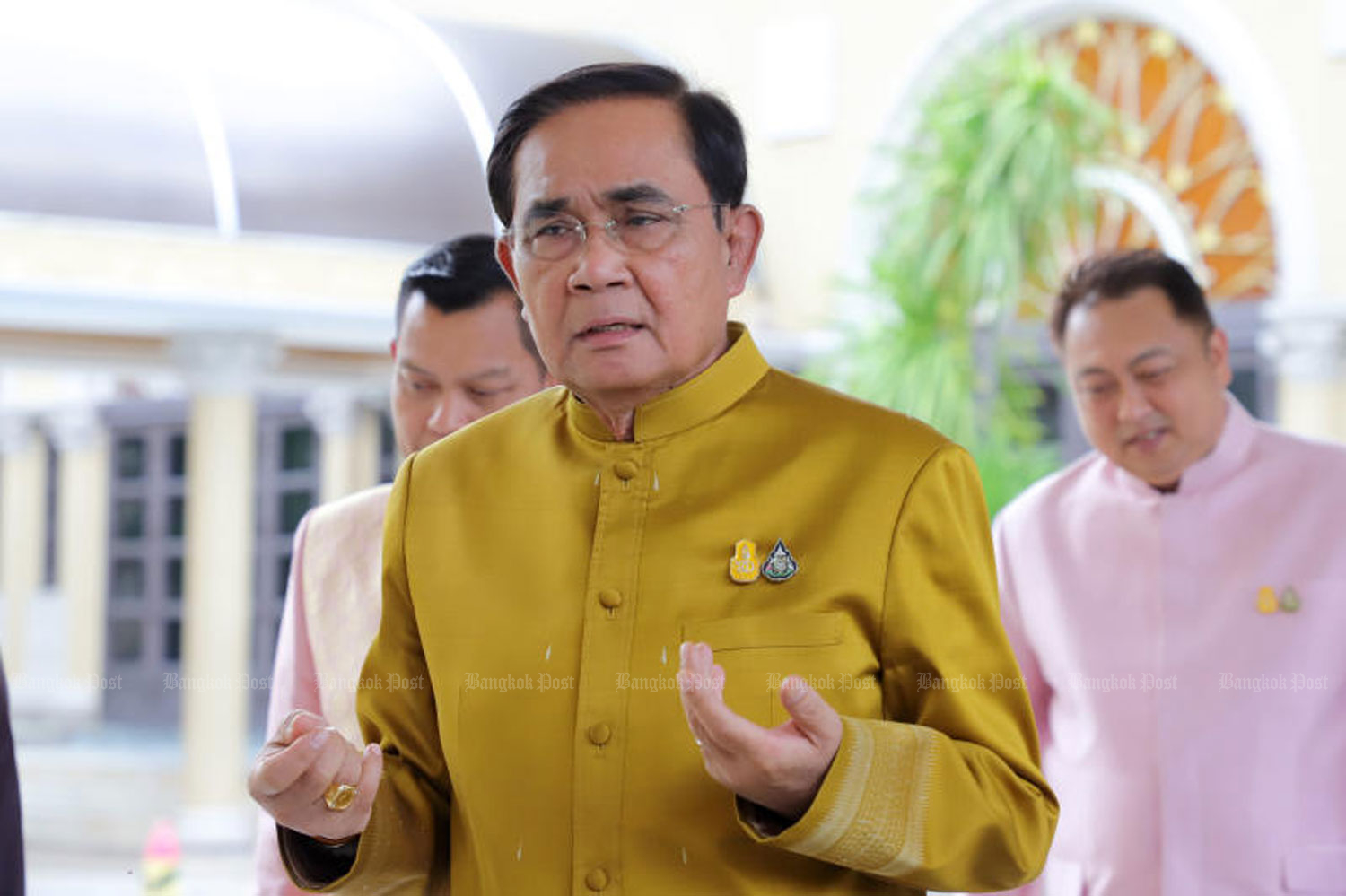
Outgoing Prime Minister Prayut Chan-o-cha has told the National Security Council (NSC) to take action against a group of activists that called for a public referendum on whether there should be a Muslim “Pattani State” independent from Thailand.
The referendum call came in a seminar titled “Self-determination”, which introduced the “National Student Movement” or “Pelajar Bangsa” of the four southern border provinces that encouraged local residents to cast a vote for such a move at the Prince of Songkla University (PSU), Pattani campus, on Wednesday.
NSC secretary-general Supoj Malaniyom on Friday said that the NSC informed the premier about the matter and then ordered a fact-finding probe into the individuals concerned out of fears the call could lead to disunity. The NSC will hold a meeting next Monday to discuss the matter.
“The call for a public referendum on independence is apparently illegal and doesn’t benefit anyone,” said Mr Supoj.
“The security law must be imposed in the South in an attempt to prevent damages to properties and danger to people. Moreover, there is also the mechanism of peaceful dialogue which widens the chances of academics and representatives from many sectors participating in a discussion without activities that lead to societal disharmony.”
Meanwhile, Somchai Sawaengkan, the chairman of the Senate Committee on Human Rights, Freedom and Consumer Protection, urged the Internal Security Operations Command (Isoc) and security agencies to investigate the matter as he believed there might be a political party behind this pulling the strings.
Mr Somchai also urged the Election Commission (EC) to inspect certain politicians and elected MPs who attended the event. He claims he has a video clip of them.
“I believe that these students had no idea their move was illegal as there must have been adults behind this. We can respect freedom of expression, but a whole separatist movement will cause too much commotion,” he said.
Kolkata metro: A British engineer’s unrealised India underwater train
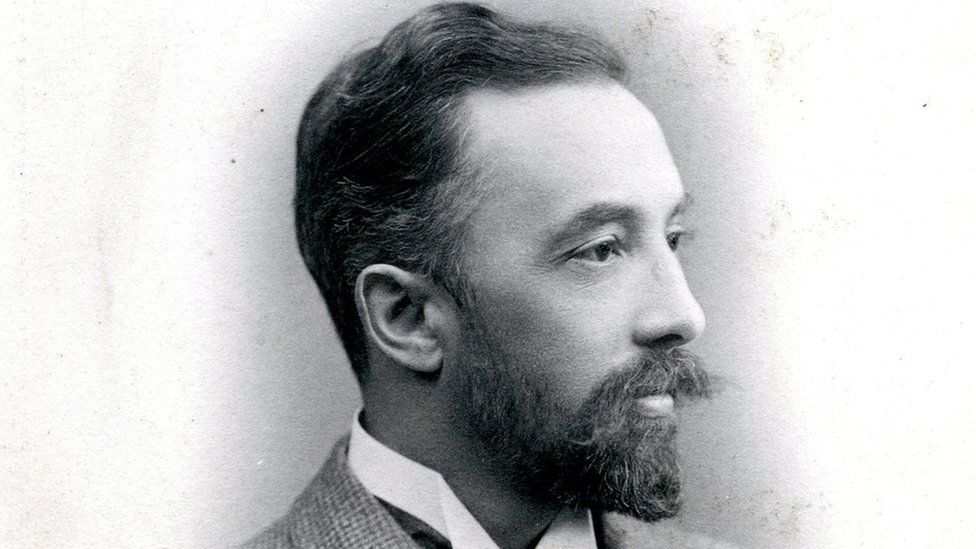 Institution of Civil Engineers Archive, London
Institution of Civil Engineers Archive, LondonWhen commuters in the city of Kolkata (formerly Calcutta) step aboard India’s first underwater train later this year, a Bengal-born British engineer who conceived an unrealised underground railway for the city over a century ago is unlikely to cross their minds.
Sir Harley Dalrymple-Hay envisioned an ambitious 10.6km (6.5 miles) underground railway with 10 stops and featuring a tunnel beneath the Hooghly river, to connect Kolkata with its twin city, Howrah. However, due to insufficient funding and doubts about the geological properties of the city’s soil, this grand plan never materialised.
Eventually, in October 1984, Kolkata did become the first Indian city to get a metro railway. From just 3.4 km long and five stations, it is today a busy 26 station 31-km network, half of which runs underground. Now in December, the metro will open India’s first underwater section that will cross the Hooghly.
The twin tunnels under the river are 520 metres long and part of a 4.8 km (2.98 mile) stretch of the metro rail connecting Kolkata and Howrah. It lies 52ft below the riverbed and, once open, is expected to serve more than 3,000 commuters every hour.

This underwater stretch of the metro is part of a longer link between Howrah and Salt Lake in eastern Kolkata that almost mirrors Sir Harley’s 1921 design.
But Sir Harley did not design just one metro line – he designed an entire underground masterplan for Kolkata, with lines extending far north and deep south of central Kolkata.
He detailed all this in a book titled Calcutta Tube Railways. It is a rich collection of intricate, delicately tinted maps of Kolkata, drawings of the proposed metro lines and detailed cost estimates for the tube rail.
The engineer recommended the installation of escalators and fans at all stations. “The larger question of the maintenance of a comfortable temperature in trains and at the underground stations is of the greatest importance, especially having regard to the high temperature at the surface at certain seasons of the year in Calcutta,” Sir Harley wrote.
When Sir Harley conceived of his Kolkata plan, underground railways were already running in London, Paris and New York.
On 10 January 1863, the Metropolitan Railway opened the world’s first underground railway in London, between Paddington (which was then called Bishop’s Road) and Farringdon Street.
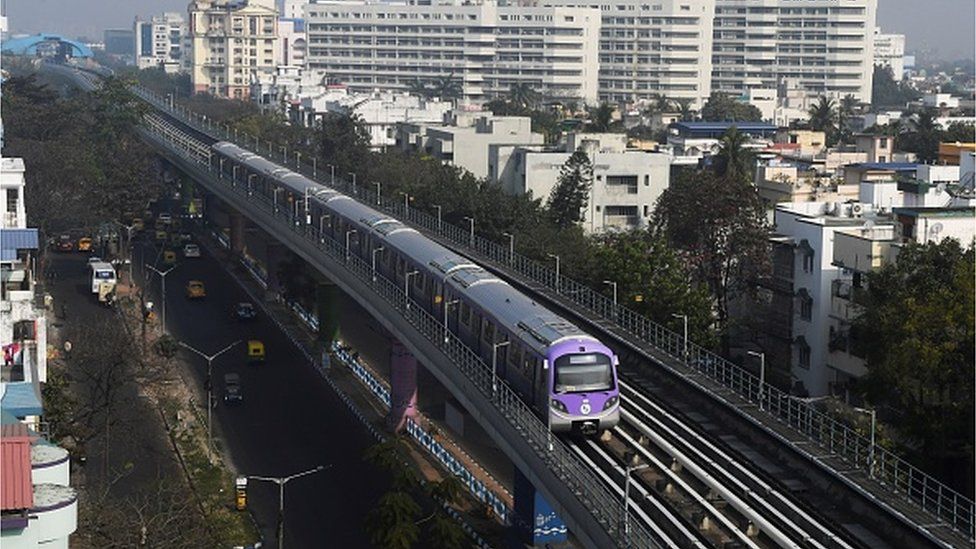
The world’s first under-river tunnel – the Thames Tunnel – opened in January 1943 and was built by an engineer called Sir Marc Brunel and his son Isambard to allow cargo to be transported underneath the busy river. They ran out of money though, so to begin with, it just opened as an attraction for pedestrians. By 1921, however, at least 10 tunnels were in operation under the Thames for roads, pedestrians, utilities but mainly the Tube.
So, in many ways, a tunnel under the Hooghly in Kolkata was not a big deal when Sir Harley designed it in 1921.
Born in West Bengal’s Birbhum district in 1861, he studied engineering in Edinburgh and then he joined the London Underground. He worked on the Bakerloo line, the Hampstead tube and the Piccadilly line. When the Imperial Legislative Council ruling British India at that time decided that Kolkata must have a tube rail, it gave Sir Harley the job in 1921.
Kolkata was no longer the capital of the British Raj but it was a busy hub of trade. Factories were thriving in Howrah. People streamed in from across India to work in the two cities. But public transport was scanty: the only road link between Kolkata and Howrah at that time was a pontoon bridge across the Hooghly. Boats would also take commuters across the river. The famous Howrah Bridge was opened only in 1943.
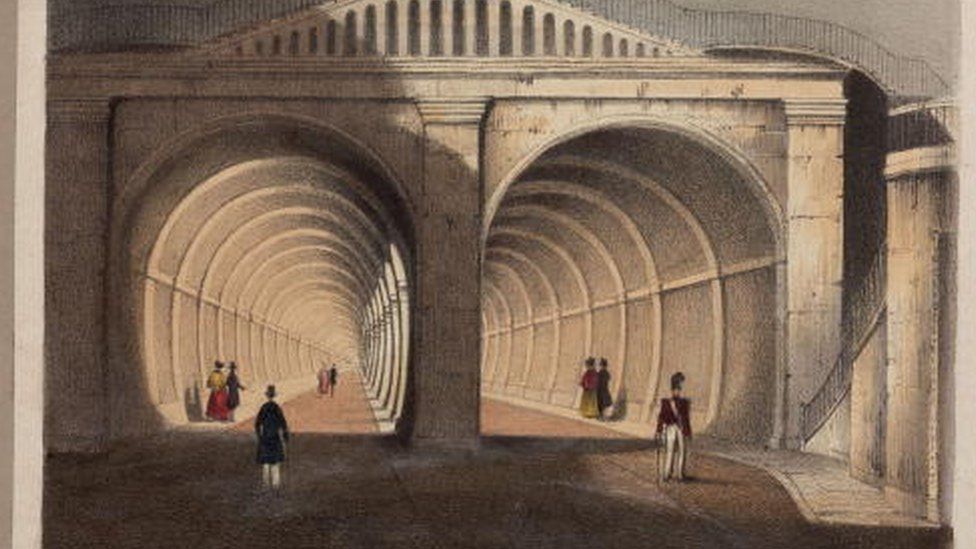
Sir Harley designed the tube rail for the city without setting foot in Kolkata. He sent an assistant “to obtain all necessary information and to make such inquiries as would enable him to report on the question of construction of tube railway in Calcutta and the adjoining municipality of Howrah”.
The first section of Sir Harley’s proposed network aimed to connect Bagmari, an eastern Kolkata neighbourhood, to a place called Benaras Road in Howrah.
However, with a projected cost of £3.5m, the metro proved excessively expensive to finance.
In December 1947, The Calcutta Municipal Gazette published front-paged news of the end of the city’s tube rail dreams.
“Having regard to the cost involved, they thought the best thing would be to have an overhead railway,” said a municipal councillor after a meeting. There were also doubts about whether Kolkata’s “alluvial, clayey and lazy” soil would come in the way of building a tunnel under the Hooghly.
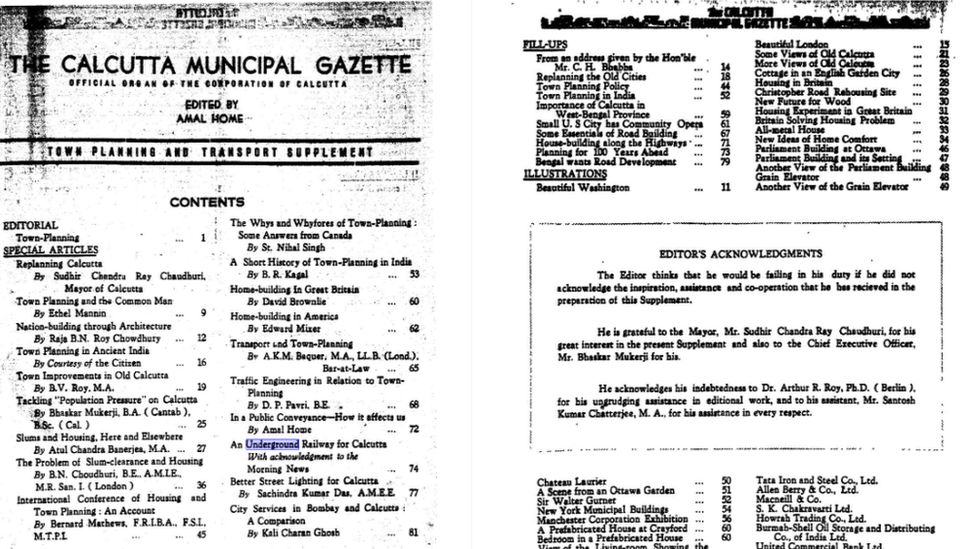
So, the grand plan of India’s first underwater railway was officially buried.
Though his tube rail plan never saw the light of day, Sir Harley has left a stamp on Kolkata. In 1928, the city’s electricity supply company, CESC, asked him to build a tunnel under the Hooghly to send power cables from Kolkata to Howrah. He took up the challenge, on the condition CESC would use a contractor that he trusted. CESC agreed and in 1931 Kolkata’s first underwater tunnel came into being.
Sir Harley’s tunnel under the Hooghly remains in use to this day. Just that only power cables run through it, and not trains.
Monideepa Banerjie is a Kolkata-based independent journalist
BBC News India is now on YouTube. Click here to subscribe and watch our documentaries, explainers and features.

Read more India stories from the BBC:
Related Topics
-
-
19 December 2018

-
-
-
28 January 2015

-
-
-
29 June 2015
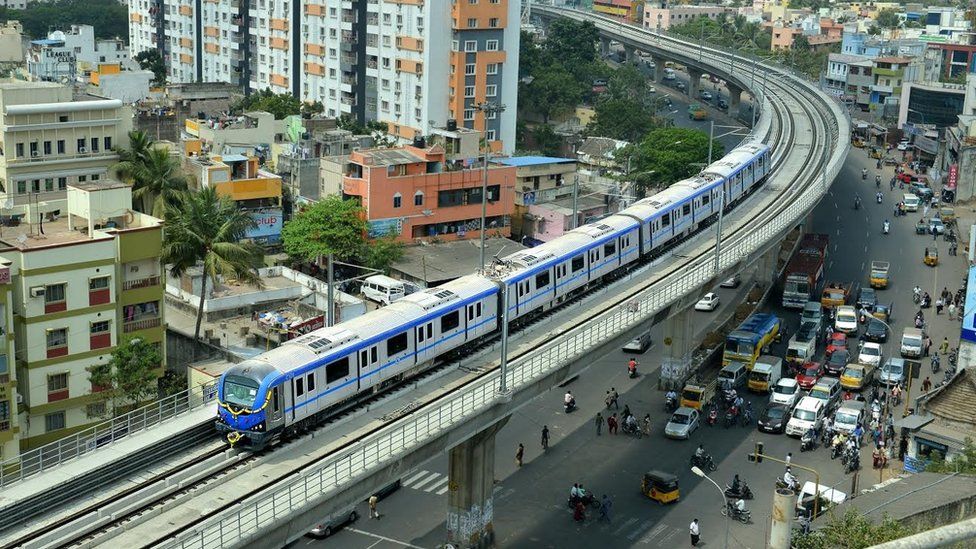
-
Blinken to be in Beijing for talks on Jun 18: US official
WASHINGTON: US Secretary of State Antony Blinken will travel to China next week for long-delayed talks aimed at stabilising tense relations, and a US official said he is expected to be there on Jun 18. Reuters reported on Wednesday (Jun 7) that Blinken would travel to China in the comingContinue Reading
Agutaya archipelago doctor who cared for 13,000 people on her own
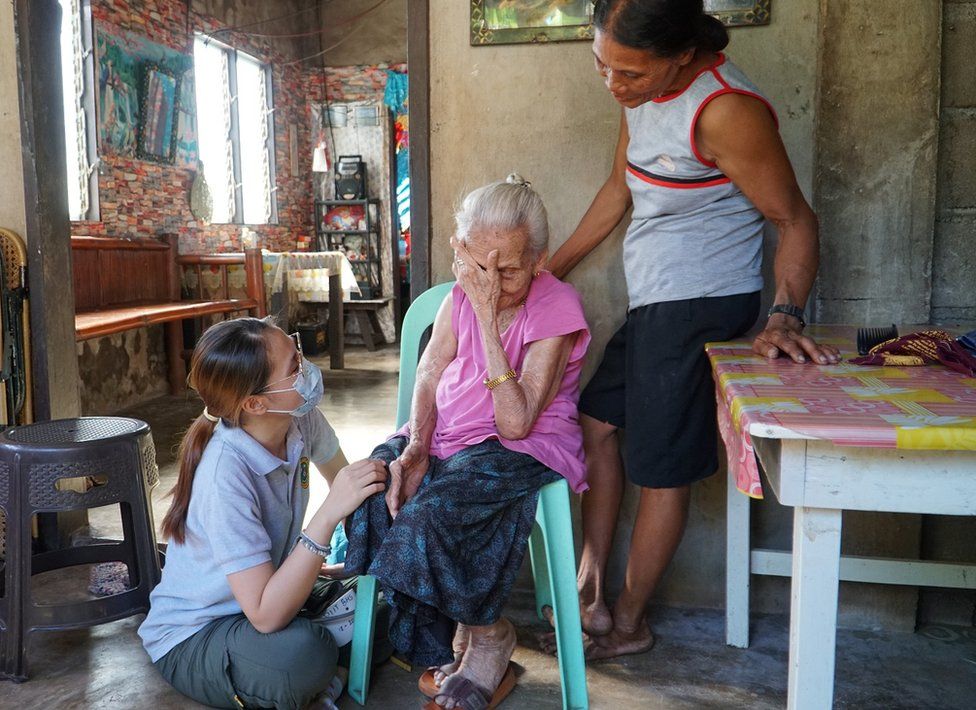 BBC/Virma Simonette
BBC/Virma SimonetteWhen 99-year-old Eleuthera Abus lifts her right arm, she winces as the broken bones move. It’s been six months since her fall.
“All I can do is manage her pain,” says Alena Yap, the 28-year-old doctor who is examining her on her porch. “She really needs to have the bone pinned. But the family is refusing to take her to hospital.”
Eleuthera’s daughters are not heartless. They are poor.
The nearest surgical facility is hundreds of miles away across the sea from the tiny island of Diit where they live. It’s one of a cluster of islands that make up the Agutaya archipelago, stranded in the middle of the Philippines’ Sulu Sea.
For the 13,000 or so people who live here, Dr Alena, as they call her, is the only doctor. Petite, with glasses and long hair tied back in a ponytail, she always wears a broad smile that masks quiet determination.
There is only one island in the archipelago she does not visit – Amanpulo, named after the luxury resort on it, which has reportedly hosted Tom Cruise and Beyoncé. On a clear day, it’s visible from the beaches of Diit, just 20km (12 miles) away.
Dr Alena arrived just before the coronavirus – and learned to live with the death threats that came when she insisted people isolate. But the pandemic that swallowed the world was far from her only challenge in this oft-forgotten corner of the Philippines. She battled new diseases and old, and came up against her country’s biggest challenges. She says she came to Agutaya to make “real changes” – but she left deeply disillusioned.
These remote, volcanic islands are not where you expect to find a graduate of the country’s top medical school, who had spent all her life in Manila, the teeming Philippine capital. Unlike so many of her peers who have left to seek careers in Australia, America and Britain, Dr Alena volunteered to join a government programme that sent her here, to one of the poorest municipalities in the country.
Covid comes calling
The main island of Agutaya is a two-and-half day journey from Manila. It includes one flight, followed by a sleepless 15-hour night crossing on an open-deck ferry from the port city of Iloilo to a bigger island called Cuyo. Then the only way in and out of Agutaya is a drenching, two-hour roller coaster ride in an outrigger canoe.
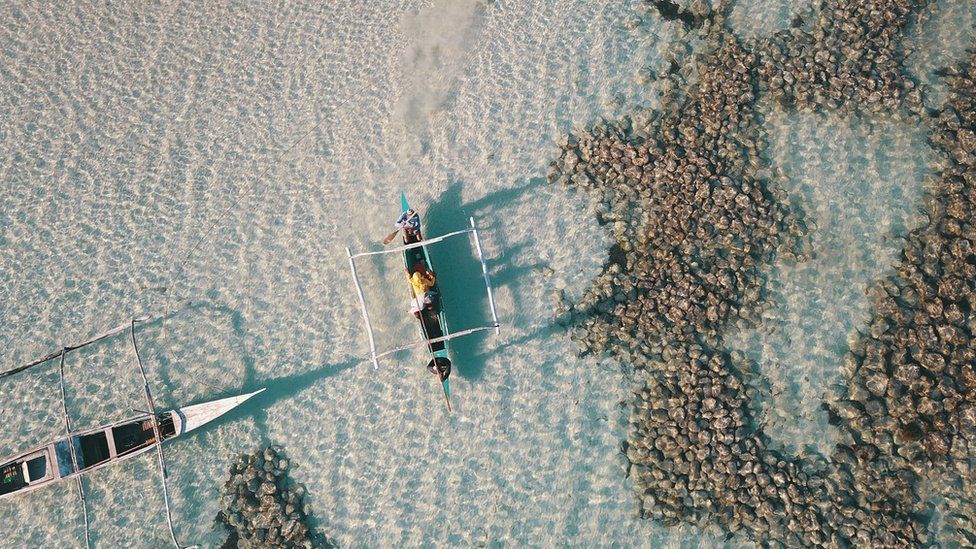
As the skilled boatman guides the outrigger across the reef and into the shallows, Agutaya looks like a piece of paradise. Below the palm-fringed shoreline, a broad swathe of white sand stretches in each direction. Colourful outrigger canoes bob around on water so clear they could be floating in mid-air.
But geography is both a blessing and a curse. Scattered over hundreds of square kilometres of sea, the dozen or so islands that make up the archipelago are cut off for days, even weeks, when the monsoon comes, winds in tow. Covered with dense forest, the hillsides sit atop large fields of basalt boulders. There is little tillable soil. The islanders rely almost entirely on the ocean.
Dr Alena made her first crossing to Agutaya in February 2020. “When I started here, I was 26 and a lot of people would mistake me for a high school student,” she says with a chuckle. “People wouldn’t believe I was a doctor.”
Her first challenge arrived within a month when the coronavirus sent the Philippines into a lockdown. The islands were sealed off.
“The first year wasn’t too bad,” Dr Alena says. “There weren’t any local cases. But the second year [2021], that is when the government allowed everyone to travel back to their hometowns. Suddenly we had people coming back from as far away as Manila.”
Dr Alena was in charge of enforcing their quarantine. “When people learned they would be quarantined they reacted violently,” she says. “I received death threats. People said they wanted to shoot me.”
She understood why. People here live day to day. What they catch in the morning they eat for dinner. If they couldn’t leave their homes to fish, they would go hungry.
So far from being embraced by the local community, Dr Alena, who had left her fiancé in far-away Manila, was now resented as a government enforcer. “There were days when I couldn’t do anything but cry. There were a lot of tears,” she says.
To ease the loneliness she began adopting dogs. Bruno is large with a big tail that never stops wagging, while Vigly is small and shy. They follow her everywhere.
“I spent a lot of time going to the beach with them and watching the sunset. I also started to draw. My pictures aren’t any good, but it’s a type of art therapy.”
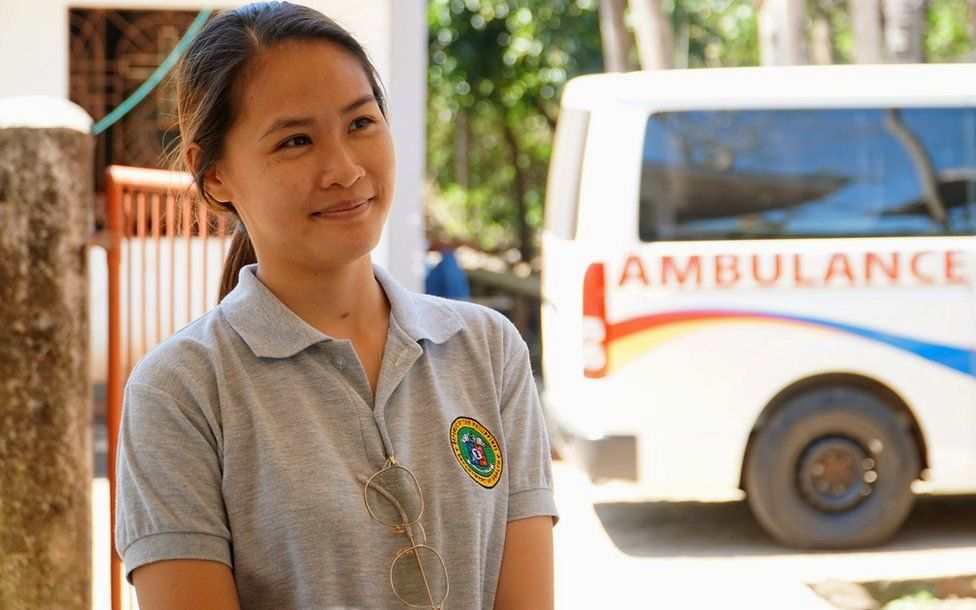
The next challenge emerged when the vaccines started to arrive in the summer of 2021.
“We had to go house to house to every island baranguay [village],” Dr Alena says. “The farthest island is nearly three hours away by boat, and many people can’t afford the fare [to come to the clinic]. So they wouldn’t come.”
Gruelling as it was, the distance wasn’t the only problem: “There was a lot of hesitancy, a lot of fake news about the vaccines being bad or that they can kill people. A lot of people get their news from social media here, and they were not getting the facts.”
By autumn 2022, the threat from Covid had begun to abate. Despite the resistance, the vaccine rollout was successful. Only eight islanders across the archipelago had died of the virus.
But that brought little respite.
The ‘medicine lady’
A line starts to form on every weekday morning outside the main clinic on Agutaya while the daily meeting between Dr Alena and her team is still under way.
On that day, first in line is a man in his 50s who has had a suspected stroke.
“Before I came here, I thought everything would be fresh and organic,” Dr Alena says, laughing at her own naivete. “But it’s very difficult to get a nutritious diet here.”
For one, locals salt and dry their fish, leading to high blood pressure. Diabetes is also common because it’s easier to find soft drinks than clean water.
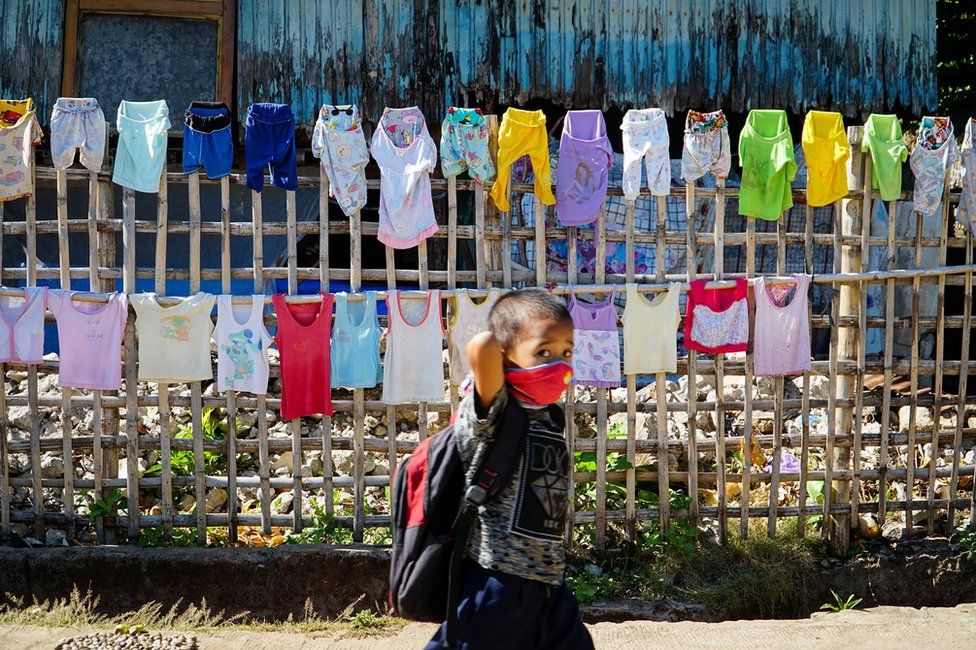
A sign at the entrance to the clinic announces the other major health problem: “sputum sampling” for tuberculosis or TB.
Dr Alens says they recorded 45 cases in 2022, but many more go undiagnosed.
A bacterial infection, TB is fatal if left untreated. It killed millions yearly until a combination of vaccines and antibiotics eradicated it from much of the world by the middle of the last century.
But the Philippines is still estimated to have more than a million cases. “The long-term plan is to eradicate it,” Dr Alena says, adding it’s “impossible in the near future”. She says because of poor access to healthcare people often relapse, and have even begun to develop drug-resistant strains.
Later that morning, a woman brings her young son to the clinic. Pale and listless, the boy slumps on a chair. Dr Alena suspects he has dengue. A few minutes later, it’s confirmed. She prescribes paracetamol, and tells his mother to keep him hydrated.
Dengue is new here. The one case in January turned to 10 by March even as Dr Alena and her team sprayed school grounds to kill the mosquitoes that spread it, and handed out treated nets.
By 11:00 the doctor is extricating herself from the growing line of patients. They will have to be dealt with by her capable nursing staff because she has to get across to Diit, 40 minutes away by boat.
It is more beautiful than Agutaya, but poorer. It has no electricity or a mobile phone tower, and only one concrete road that runs out after a few hundred metres.
The arrival of the “medicine lady” as Dr Alena is fondly called is greeted with much excitement. Dozens of school children come running down the beach. They’ve been given the day off so Dr Alena’s dengue control team can spray their school grounds with insecticide. As she walks through the village, she’s like the pied piper, with a long stream of laughing children following.
She visits an elderly couple sitting outside their house along the beach in wheelchairs. Both have had strokes and are partially paralysed. She checks his blood pressure – 150 over 90. “It’s high, but acceptable for his age,” she says.
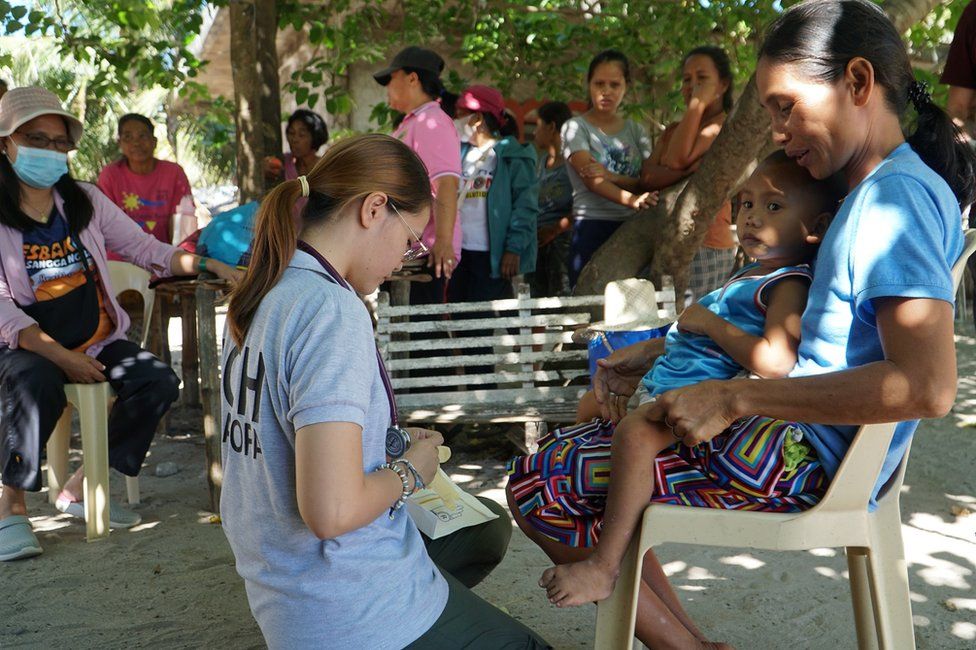
A woman in her 40s pushes her way through the crowd that has gathered around. She is carrying a boy, who is perhaps five or six years old. Dr Alena tells her to sit down on a chair and begins to examine the child. He has a hugely enlarged left testicle. The torch reveals a hernia in his lower abdomen. A part of his intestine has penetrated the bowel wall, pushing into his testicles.
“He will need surgery,” Dr Alena tells the mother. The hope in the women’s eyes turns to anxiety.
Dr Alena asks her if she knows anyone who she can stay with on one of the bigger islands. Yes, the woman says – in Culion, a 12-hour boat ride away.
“Once I tell them they need to have an operation, you see in their faces the fear and the sadness because they realise there isn’t any medicine I can give them to cure this,” Dr Alena says. “You see in their minds [the thought] how are they going to afford this? It’s hard being the one to deliver the news.”
In another part of the world, a hernia is a minor medical procedure. But here it can wipe out a family’s savings, leaving them in debt for years.
“If we could make travel easier that would make a lot of difference,” she adds. “But that’s hard because it will take a lot of resources.”
After three years on the island, Dr Alena’s optimism and ambition have given way to the disheartening realisation that resources – or money – will always be the biggest challenge.
Paradise lost
A concrete all-weather road runs along the base of the rocky hills that circle the main island of Agutaya. Construction began alongside campaigning for the local election last year. One lane was finished before election day, but islanders say work stopped after that. There is no second lane yet.
“We’ll have to wait for the next elections to get the road finished,” quips one local.

On the other end of the island, rusting steel bars stick out of an incomplete concrete structure that is gradually being overrun by vegetation.
It was supposed to be the new rural health unit, Dr Alena says. Work stopped last year because the local government ran out of money. “But they haven’t completed their part of the deal,” she says, her frustration palpable.
Philippine politics is not driven by parties, but personalities, and dominated by large, powerful clans whose chiefs promise resources from Manila in return for votes. As one local woman put it, Agutaya is too small a community: “There aren’t enough votes here that make it worth the money.”
Local politicians have little incentive to change and come election time, vote-buying is common enough that it now seems to have a well-worn price: 500 pesos, or $28 (£22). Corruption runs deep, and the money pouring in doesn’t seem to reach its destination.
“I came here very idealistic,” Dr Alena says, sighing. “I was very aggressive to try and change the way the local health system worked. But then as time goes on you realise that three years is far too short to make any big changes.”
As her time on Agutaya – a three-year-contract – drew to an end, many islanders told her they would be sad to see her go. “Time flies fast,” said Ricardo, one of the senior nursing assistants, who described her as “selfless and hardworking”.
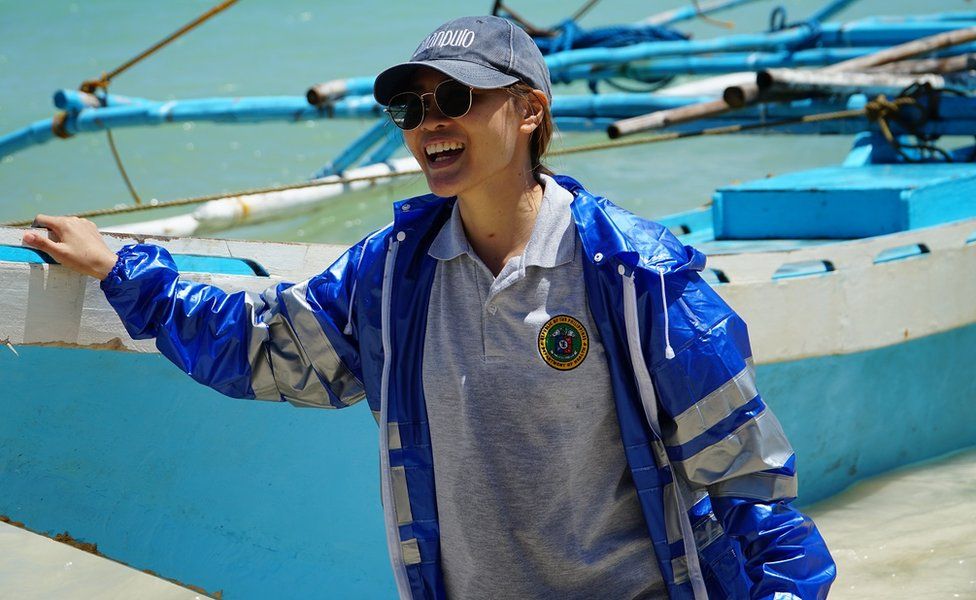
But in the weeks since returning to Manila, Dr Alena says she has felt disappointed and even cynical about her experience working for local government. She was offered a job at the provincial health administration in Palawan but turned it down. Instead she wants to work in a medical charity or NGO.
Last week, she returned to Agutaya as part of an NGO-run programme with a group of specialist doctors who visit once a year to do minor surgeries.
But this time it didn’t take her two-and-half days. Dr Alena and the other doctors arrived there three hours after taking off from Manila – they touched down on a runway in the luxury island of Amanpulo in a private plane funded by international donors.
Related Topics
Activists make case for weed

Pro-cannabis activist groups are urging the prospective government coalition led by the Move Forward Party (MFP) not to put cannabis back on the narcotic drugs list.
The Cannabis for the People Association, led by its coordinator Ratthapon Saenrak, submitted complaints on the matter to the MFP’s office yesterday before having a discussion with the party regarding its cannabis-related policies.
According to Mr Ratthapon, the association has worked on cannabis usage for at least ten years with the aim of removing the plant from the narcotic drugs list. With that said, they thought they might have a better way to control the plant’s usage than to include it in a pact outlining their working agenda that eight alliance members signed on May 22.
The association’s members said that putting the plant back on the list without any supporting literature might have a wider effect on society than just removing it did.
They said those who engaged in the industry legally from the start might face sudden, unfair accusations later and that it could affect those who rely on cannabis for their business and livelihood.
The members fielded two core complaints, said Mr Ratthapon. One was a call for a discussion about what those who benefited from the plant should do next before any law is potentially passed criminalising the plant. The other called for a law that closes any loopholes allowing for the plant’s widespread recreational use.
MP-elect Woraphob Wiriyaroj said the party would consider a new cannabis law that balances the interests of users of a legal age while also protecting minors, adding it will engage in further discussions with the association.
Members of Thailand’s Cannabis Future Network will also submit a list of their complaints to Prime Minister Prayut Chan-o-cha.
An event commemorating National Cannabis Day was held at the Office of the Public Sector Development Commission in Bangkok yesterday.
It featured a table with a petition calling for cannabis not to be placed back on the list of narcotic drugs, as well as a discussion regarding plans to control the plant’s usage, led by Prasitchai Nunual, the network leader.
Rising healthcare costs in Singapore: How women cope with paying more for doctor visits

DOING WHAT’S BEST FOR YOU
So, how does one balance healthcare needs and rising costs?
Saving on medication, for example, is pragmatic but it’s a fine line, said medical experts. Most healthcare professionals say the same thing: Always do what is best for your health.
“The actual cost difference between seeing a GP and a specialist depends on what the individual patient is consulting for, the tests and treatment required,” said Dr Huang. “In general, one may expect to pay at least 50 per cent more when seeing a specialist. But this is necessary when the requisite treatment is not available at the GP.”
She added that some patients baulk at being referred to a specialist, despite having conditions that require specialist attention. “In those situations, we will refer patients to seek specialist attention at a public healthcare institution where cost may be less prohibitive for them.”
Dr Ng echoes this. “In such cases, for their health and well-being, I would share more cost-efficient alternatives to the best of my knowledge, like the public healthcare system or university training clinics. For these patients, it is better to seek specialist help than receive help that is not effective, or none at all.”
*Name has been changed.
Is China challenging the US in Its own back yard?
Is the Monroe Doctrine about to meet Xi Jinping Thought?
Cuba, the Caribbean Sea island and Cold War remnant isolated from its northern neighbor for most of the past 60 years, has agreed to let China construct an electronic spy base on its territory, according to the Wall Street Journal.
China is willing to pay Cuba “several billion dollars” to allow construction of the eavesdropping station, the Journal said Monday.
Such an accord would indicate China’s willingness to incur American wrath by placing a military intelligence facility 90 miles off US shores. It would stand as an expression of Beijing’s anger over moves by the US to “contain” China by building new or supplementing old military alliances in the Western Pacific Ocean.
It would indicate, in short, that Chinese leader Xi Jinping means to show that China can flex military muscle in the Caribbean, even if only in the form of electronic espionage equipment.
The US administration denied the substance of the report. If it were acknowledged to be true, President Joe Biden would be under great pressure to respond.
The Monroe Doctrine is an American foreign policy dogma dating from the early 19th Century. It was meant to prohibit European colonial powers from threatening the US through other hemispheric countries.
It last gained prominence in 1962, when Soviet leader Nikita Khrushchev tried to supply Communist Cuba with nuclear weapons. Khrushchev declared the doctrine dead as he transported nuclear missiles via ship toward Havana.
US President John F. Kennedy invoked the doctrine and set up a maritime blockade of Cuba. The Soviet ships retreated.

Biden, as a young politician, used to ape JFK’s speaking style. Now he may be faced with trying to emulate the missile crisis result.
Washington became aware of the Cuba-China espionage plan a few weeks ago, the Journal report said. Installation of a spy station would allow Beijing to gather electronic communications from military bases in southeastern American states and to monitor ship traffic.
China is not shy about its own construction of alliances. It has built a strategic partnership with Russia and is unwilling to criticize Moscow’s invasion of Ukraine.
Beijing also made a small effort to extend its naval reach into the Pacific far beyond its shores last year. It signed a security agreement with the Solomon Islands, north of Australia. The accord focuses on building the islands’ defenses, along with offering humanitarian aid.
It also includes a clause that lets China make naval “visits to carry out logistical replacement,” and send Chinese forces to “protect the safety of Chinese personnel” employed there.
Earlier this year, what the US government identified as a Chinese “spy balloon” transited across US territory, and over several military bases and facilities. US President Joe Biden ordered it shot down as it exited over the Atlantic Ocean.

Biden, recently trying to ease tensions with China, had sent one of his top officials, National Security Advisor Jake Sullivan, to Vienna for talks with China’s top diplomat Wang Yi.
After the Sullivan-Wang meeting, Biden signaled his desire to warm relations with China and blamed recent tensions on “the silly balloon that was carrying two freight cars’ worth of spying equipment.” He added that relations would “begin to thaw very shortly.”
China provided no comparable happy talk. Rather, Wang said he had focused on the issue of Taiwan, whose future as part of China is a “solemn position” and none of Washington’s business.
A quick arrival at warm relations seems unlikely, even though the US National Defense Strategy paper issued last year blandly listed China as a “competitor” and Biden has gone beyond that only far enough to label it a “stiff competitor.” Washington’s current view of China seems better described by deeds rather than bland diplo-speak.
This year, Washington deepened its military alliance with South Korea by reaching an agreement to deploy nuclear-armed submarines there and by inviting Korean participation in regional nuclear planning.
In return, Seoul agreed not to build its own atomic weapons. (The US fears some sort of tit-for-tat nuclear exchange between the South and Communist-ruled North Korea.)
Not long after the Korean accord, Japan, alarmed by Chinese naval nearby activity, said it would increase defense spending up to two percent of its gross domestic product by 2027. The increase meets a longstanding pledge made by Japan and its NATO partners in 2014; Japan’s promise requires a 60% increase above its current defense outlay.
Meanwhile, the Philippines said it was permitting US forces access to four military camps, widening American presence in the Southeast Asian island country.
Last year, the US, United Kingdom and Australia agreed to construct a fleet of at least eight nuclear submarines in Australia. Although the sophisticated subs will take several years to produce, it was yet another sign of a quick and broad naval expansion in the Pacific under US leadership.
If the Australian accord was not signal enough of the creation of a watery Great Wall against China, Papua New Guinea and the US signed a preliminary security cooperation pact. It is designed to strengthen Papua New Guinea’s defense force – a “natural progression” in US-Papua contacts, the State Department wrote.
Rounding out the frenetic revamping of Pacific military resources, the United States approved the sale of $619 million in new weapons to Taiwan, including missiles for its F-16 military jet fleet.
While the speed of alliance-building is unusual, the Biden Administration moves represent realization of a US wish that is more than a decade old to make a military “pivot to Asia” to confront China.
President Barak Obama made a stab at pivoting during his two terms in office that ended in 2017. Obama increased the US naval presence in the western Pacific by 60%, but further efforts were hampered by budget constraints and the American involvement in wars in Afghanistan, Iraq and Libya.
Obama’s successor, Donald Trump, focused less on a military pivot than on changing trade imbalances, curbing intellectual property theft by China and Chinese influence on US universities.
Biden’s policies have received steady criticisms from Beijing. The US alliance with Japan, for instance, “Will pose a threat not only to China, but also to North Korea and Russia in the region. China is right to take strategic action to respond,” Song Zhongping, a Chinese military expert, told China’s Global Times newspaper.
China expressed both perplexity and opposition to US military interest in Papua New Guinea. “China believes the rest of the world needs to give more attention and support for development and prosperity in Pacific island countries,” said Foreign Ministry spokesperson Wang Wenbin. “We oppose bringing geopolitical contest into the region of Pacific island countries.”
Generally, Chinese critiques of US and allied moves focus on opposing efforts to “contain” China and what Beijing decries as persistent promotion of a “Cold War mentality” and “bloc building.“
Use of economic muscle has been China’s main tool of influence. The fruits of its Belt and Road initiative span the globe. Along those lines, Beijing has made inroads into the American backyard of Latin America, supposedly off-limits to potential enemies.
Take Brazil, the continent’s biggest country. Over the last twenty years, China went “from being practically irrelevant to Brazil’s economy to becoming the country’s main economic partner, both in trade and, more recently, in direct investments and finance,” wrote the United States Institute of Peace in a recent report.
The benefits for Brazil include big commodity exports, especially of meat and soy. Brazil’s President Luiz Inacio Lula da Silva shares some geopolitical positions with Xi that are dear to the Chinese leader. During his recent state visit to Beijing, Lula called for replacing the US dollar as the word’s chief trading currency with some other basket of currencies. China wants the same thing.
Lula also joined Xi’s expression of neutrality over the war on Ukraine, though he stated that, “Putin shouldn’t have invaded.”
And Cuba? Commerce with China appears locked in a classic imbalance of trade between a poor country selling low-priced commodities in order to import industrial products. Cuba exports sugar, tobacco and nickel to China; China sells machinery, electronic goods and medicines to Cuba.
US officials’ initial reaction to the Journal’s report said it contained some inaccuracies, but the officials declined to specify what those might be or to comment on the overall thrust of the article.
Cuban Vice Foreign Minister Carlos F. Cossío said in a press conference that the Journal had reported “fallacies promoted with the deceitful intention of justifying the unprecedented tightening of the blockade, destabilization, and aggression against Cuba and of deceiving public opinion in the United States and the world.”
This article first appeared in Daniel Williams’s newsletter Next War Notes. It is republished with permission.
12.5m more skilled staff eyed by 2027
11 industries being targeted for upgrade

Thailand aims to produce around 800,000 skilled workers next year in targeted industries, including intelligent electronics, next-generation automobiles and healthcare.
Deputy Prime Minister Prawit Wongsuwon chaired a meeting of the national workers’ skill development committee at the Five Provinces Bordering Forest Preservation Foundation on Friday to discuss incentives to develop more skilled workers.
The meeting agreed to draft a skilled worker development plan which will be executed by provincial organisations to create 12.5 million skilled workers by 2027.
Provincial governors have been assigned to draft development plans to create more skilled labour in 11 targeted industries.
Four of the 11 industries have finalised their desired number of workers: 24,500 people in next-generation automotive services, 713,432 in digital services, 357,300 in processed food, and 298,100 for Thailand’s medical hub.
Provinces will be offering students in local schools and colleges the chance to join skills training and worker development programmes based on local demand. Gen Prawit said prisoners would also be included in the training.
Skills development training at the provincial level will lessen the chances of workers wanting to migrate to cities and will also improve the lives of local people, he said.
Gen Prawit said the public and private sectors must collaborate to create more skilled labour to meet the demands of growing industries.
He added that the Ministry of Higher Education, Science, Research and Innovation and the Department of Skill Development should join hands to foster new jobbers.
Meanwhile, Job Expo Thailand 2023, which started on Thursday and ends on Saturday, saw large numbers of job-seekers. It is being held at Event Halls 100-102, Bitec Bang Na, organised by the Ministry of Labour and private companies.
The expo offers job opportunities for new graduates, senior citizens and people with disabilities. With over 29,000 positions in the private sector and 81,000 offered by recruitment companies, people can seek jobs in real estate, communications, manufacturing, finance, insurance, sales, construction, health and academia.
Nawaporn Rod-iam, 23, said she is a finance graduate working at a private company who is looking for a new job with higher pay that will also allow her to gain more skills.

